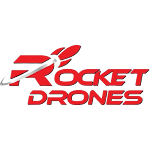In recent years, education has embraced a variety of innovative tools to enhance learning and engagement among students. One of the most thrilling additions to the educational arena is drone racing. This fast-paced, technology-driven sport not only captivates young minds but also offers a practical application of science, technology, engineering, and mathematics (STEM) principles. As schools across the globe integrate this exciting activity into their curriculum, the impact on student learning and interest in STEM fields is profound. In this article, we will explore how drone racing is making education more interactive and preparing students for the future.
The Rise of Interactive Learning
Drone racing introduces an interactive learning environment where students are not just passive recipients of information but active participants in a dynamic educational experience. Through hands-on activities involving educational drone kits, learners gain a deeper understanding of aerodynamics, electronics, and software programming. This practical approach helps demystify complex concepts, making them more accessible and engaging to students.
Boosting STEM Education
The incorporation of drone racing into school programs is a game-changer for STEM education. It provides a fun and competitive way to apply mathematical and engineering theories. As students design and optimize their drones for performance, they engage deeply with the STEM curriculum, fostering a practical understanding and appreciation of these subjects. This real-world application helps to solidify their knowledge and inspires further exploration in these essential fields.
Collaboration and Teamwork
Drone racing in schools promotes not only technical skills but also essential soft skills like teamwork and communication. Students must collaborate to assemble and operate their drones effectively, which teaches them the value of working together and sharing ideas. These collaborative projects encourage students to discuss strategies, solve problems collectively, and support each other’s learning, mirroring the collaborative nature of professional STEM fields.
Expanding Horizons with Drones
As drone racing becomes more integrated into educational systems, it also opens the door to new learning modules and curricular developments. Teachers are now incorporating drone-based projects that allow students to explore and innovate beyond traditional classroom settings. This exploration includes not only the mechanics of flying but also the ethical implications and environmental considerations of drone use, providing a holistic approach to modern education.
Preparing for the Future
By integrating cutting-edge technologies into the classroom, schools are preparing students for future careers in technology and engineering. Drone racing offers a glimpse into the potential applications of drone technology in various industries, from agriculture to emergency response. As students learn to navigate and innovate within this field, they develop a skill set that is highly relevant to the modern workforce.
Bottom Lines
As we look to the future, the role of innovative educational tools like drone racing will only become more significant in shaping a curriculum that is both engaging and educational. Schools incorporating this technology are not just teaching students to fly drones; they are launching them toward a horizon filled with technological possibilities. With companies like Rocket Drones subtly fueling the aspirations of young minds through advanced and accessible technology, the sky is truly the limit for what education can achieve. Their commitment to making cutting-edge technology easily accessible ensures that every student can reach new heights of innovation and creativity, further transforming the landscape of educational possibilities.



